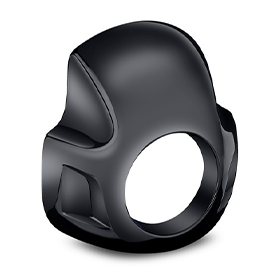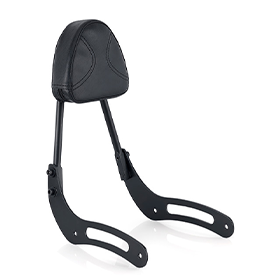A motorcycle helmet is the most important and expensive piece of riding gear a motorcyclist carries. Because they are exposed to rain, dirt, and grime, motorcycle helmets require extra care and maintenance.
Despite being able to protect your head, helmets can become fragile if riders don’t pay attention to their conditions. Providing maintenance and care for motorcycle helmets can extend the lifespan of your helmet. This article discusses the best ways you can maintain your motorcycle helmet.
- Table of Contents
- 1. What Causes Your Motorcycle Helmet to Become Dirty?
- 2. Motorcycle Helmet Care Guide
- 2.1 Clean Helmet Regularly
- 2.2 Keep Helmet Dry
- 2.3 Avoid Putting Your Motorcycle Gloves Inside Helmet
- 2.4 Be Careful When Holding Your Motorcycle Helmet
- 2.5 Keep Your Visor Clean and Scratch-Free
- 2.6 Avoid Using Harsh Chemicals to Clean Helmet
- 2.7 Don’t Leave Your Helmet on Motorcycle
- 2.8 Maintain a Scratch-Free Helmet
- 2.9 Replace the Straps
- 2.10 Store Your Helmet in a Well-Ventilated Location
- 3. Dos and Don’ts of Helmet Care
- 4. Last Words
1. What Causes Your Motorcycle Helmet to Become Dirty?
Helmets need to be cleaned on a regular basis since the interior and exterior constantly get dirty. The helmet’s interior soaks up your body’s odor, oils, and sweat if you ride your motorcycle for a long time. These substances gradually permeate into the liner and foam, producing that smell that makes you rush for the cleaning products.
1.1 Scratches
Helmets have lenses that can be scratched, which could impair your vision. The lenses can suffer more damage if the surface collects moisture, dust, and other debris. You can restore your helmet by using non-scratching cleaning products.
1.2 Dirt Buildup
The helmet’s exterior can become dirty due to constant exposure to dust, grime, acid rain, smoke, pollen, etc.
Helmets need to be cleaned daily, especially if you ride for extended periods on routes with a lot of traffic. You can clean your helmet’s interior and exterior by wiping them down with a moist cloth. Make sure to let the surfaces dry completely before storing your helmet.
1.3 Moisture Buildup
Your vision can become obstructed if moisture blurs the visor, which can increase the risk of accidents and injuries. To clean off moisture, it is best you use anti-fog and de-fogging cleansers. Dust and other debris can become trapped in the moisture. You can also stop your motorcycle helmet’s visor from fogging up by coating the surface with a waterproof spray.
2. Motorcycle Helmet Care Guide

2.1 Clean Helmet Regularly
The helmet’s interior can become filthy and start to smell if not cleaned after repeated use. Make sure to thoroughly clean the entire helmet using mild cleaning products.
Daily Cleaning
Cleaning your motorbike helmet daily is crucial, especially the visor. A clean, high-quality visor will ensure you can clearly see the road and any incoming hazards.
Every time you finish a ride, moisten some hand towels and place them on the visor for a short period of time before wiping the surface clean. If your visor is scratched, repair it right away since a scratched visor can obstruct your view.
Weekly Cleaning
Modern motorcycle helmets have several openings and vents, but they only function if they are clean and open. It is best to clean the vents every week with a toothbrush to make sure there is no clogging.
Monthly Cleaning
Most motorcycle helmets contain linings or cheek padding that must be removed and cleaned every month. Check the manufacturer's directions before cleaning as these pads may have specific instructions when it comes to washing.
Yearly Cleaning
Your motorcycle helmet may accumulate moisture, oil, and other debris over several months. You should clean the helmet’s interior at least twice a year, cleaning any non-removable padding with a moist cloth before letting it air dry.
2.2 Keep Helmet Dry
Keep your helmet dry at all times since the structure may suffer water damage if soaked. Since most helmet frames are made of steel, moisture will cause them to rust.
It is not good to let moisture remain on the helmet’s surface. If it was raining or foggy, clean and dry your motorbike helmet immediately after your motorcycle has been parked. If the padding or inner lining is wet, use a tissue to soak the moisture before wiping the outside with a soft cloth. Keep the visor open when drying off the helmet’s surface.
2.3 Avoid Putting Your Motorcycle Gloves Inside Helmet
Many riders have a habit of putting their gloves inside their helmets after getting off their motorcycles. Avoid doing this since motorcycle gloves may be dirty with sweat, grime, fuel, and oil. This could cause the helmet’s interior to smell and become stained.
2.4 Be Careful When Holding Your Motorcycle Helmet
Though motorcycle helmets are made of durable fiberglass, you should still handle your helmet with care. Even a fall from a height of 2 meters might cause your motorbike helmet to become damaged.
The more times your motorcycle helmet is struck, the less capable it becomes at evenly distributing the shock of an impact.
2.5 Keep Your Visor Clean and Scratch-Free
To ensure a clear view regardless of the weather and lighting, it is crucial you take care of the helmet’s visor. Even after short trips, your visor may become covered in dead insects and debris.
While riding a bike, having bugs and dust obscuring your visor can increase the risk of getting into a serious accident. A scratched visor can make it more difficult to see in low light and at night.
When the visor is covered with dirt and insects, try to avoid wiping it with a dry cloth. To clean the visor, use a moist and soft cloth or a wet towel. You can also facilitate this process by using a conventional visor cleaner.
You can cover any extensive scratches on the motorcycle helmet’s surface by using a permanent marker, stickers, or paints.
2.6 Avoid Using Harsh Chemicals to Clean Helmet
Never use cleaning products with chemicals hat would irritate your skin or be unhealthy to breathe in. Odor-removal products that use solvents or aerosols damage the foam padding and inner lining. It is best to use a mix of soap and water to clean the helmet’s interior.
Never use dishwashing soap or spray cleaners to clean the visor since it could weaken the plastic.
Never use a kitchen towel or an old T-shirt to wipe your helmet. Instead, use an ultra-soft microfiber cloth that will not damage the surface.
2.7 Don’t Leave Your Helmet on Motorcycle
It's a bad practice to leave your helmet on your bike since you run the risk of having your helmet damaged or stolen.
Your helmet should always be on your head or carried in your hands or a bag. For this reason, picking a lightweight helmet is a wise decision.
2.8 Maintain a Scratch-Free Helmet
Make sure there are no scratches on the exterior of your helmet. People frequently ignore the extensive damage caused by scratches.
On the other hand, a scratch ruins your motorbike helmet's outside appearance. A scratchy helmet looks terrible and can make you decide to switch to a different model.
You can conceal scratches on your motorbike helmet in a few different ways. There are some that work and some that don't. Before employing any technique, you must be very certain.
How to Hide Motorcycle Helmet Scratches?
There are different ways of hiding scratches on motorcycle helmets. Some of them are:
Use a Permanent Marker: You can use permanent markers available in the market to cover scratches on motorcycle helmets. This is not a long-lasting technique but can be very effective.
Use Stickers: The easiest and most useful way of hiding scratches on the helmet is using stickers.
Use Touch-Up Paint: Using touch-up paints is the best and most long-lasting method of hiding helmet scratches.
2.9 Replace the Straps
Make sure to check the condition of the helmet straps and replace them if necessary. Although helmet straps are durable, they can slowly become weakened without you noticing.
If the helmet straps become damaged, you should get a new helmet if the straps are too frayed to be fixed.
2.10 Store Your Helmet in a Well-Ventilated Location
Store your helmet in a warm, dry, and well-ventilated place. Never leave them under direct sunlight or in a damp environment.
Furthermore, it is best you never store your helmet in a closed box because fungus can form on the surface in such conditions.
Always dry your helmet fully after each ride and then store it in a dry place.
3. Dos and Don’ts of Helmet Care
3.1 Dos
- Before wiping the helmet, use a moist cloth to clean off the dirt and bugs.
- Use silicone-based products regularly to lubricate the moving parts of your helmet, such as the visor hinges.
- Wear a cap or balaclava under the helmet to soak up any sweat to help keep your helmet clean.
- When cleaning the visor, be gentle to avoid scratching or leaving rubbing marks.
- Apply automotive polish on the helmet’s exterior to extend its longevity.
- Don’t use harsh chemicals to clean your helmet. Always use soap and water.
- For cleaning vents and joints, use cotton swabs.
- After cleaning, let the helmet’s interior and exterior air dry.
3.2 Don'ts
- Don’t use petroleum or solvent-based cleaners to clean your helmet.
- Don’t use a rough cloth to clean the helmet’s visor to avoid scratching it.
- Don’t use any glass or ammonia-based cleaners to clean the helmet’s visor.
- Always use a moist, soft cloth to dry and clean the visor.
- Don’t exert too much force on the visor while cleaning.
- Never use dryer sheets to try and get rid of the smell in the helmet’s inner lining.
4. Last Words
As a motorcycle helmet is the most important piece of riding gear, it is necessary to take good care of it. A rider's comfort and safety can be improved if you maintain the helmet on a regular basis. Even a newer helmet needs to be cleaned after a ride because it is covered in sweat, oils, and dirt that can cause it to smell. Cleaning and maintaining a motorcycle helmet is beneficial since it will extend its lifespan. If you want to improve your motorcycle look, you can add new saddlebags, seats, crash bars, fairings, handlebars, and sissy bars.

















Leave a comment
All comments are moderated before being published.
This site is protected by reCAPTCHA and the Google Privacy Policy and Terms of Service apply.